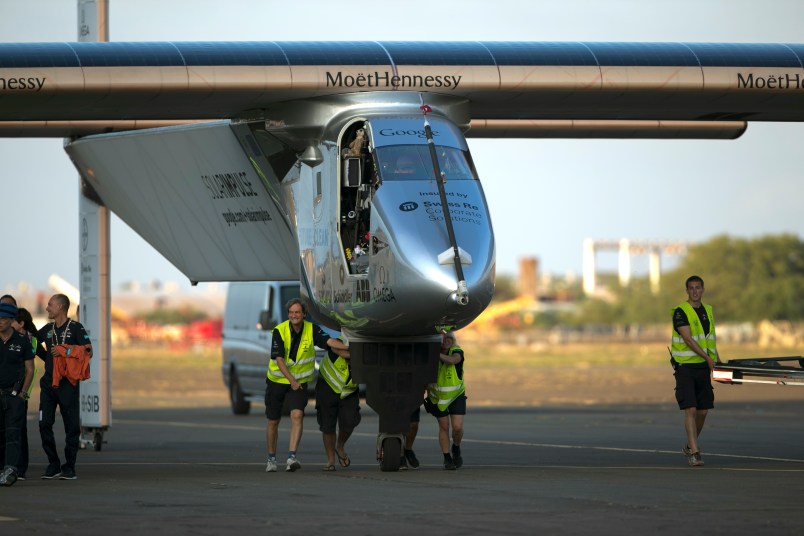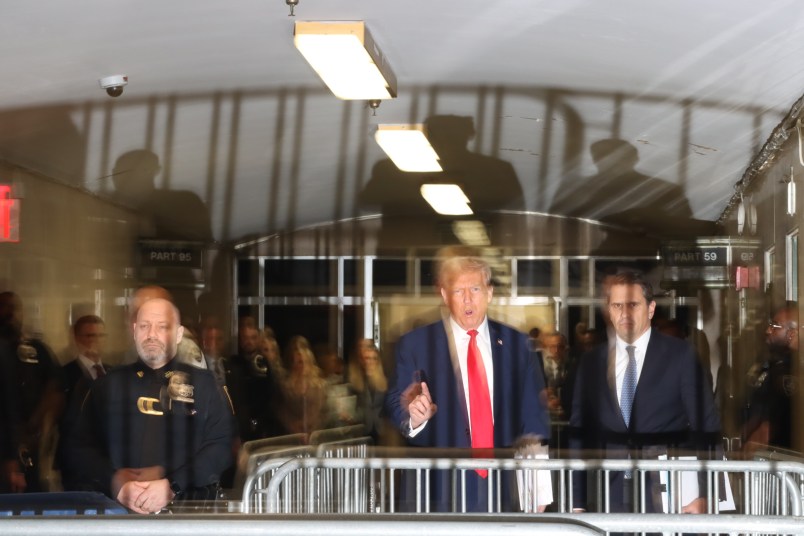KAPOLEI, Hawaii (AP) — A plane powered by the sun’s rays landed in Hawaii Friday after a record-breaking five-day journey across the Pacific Ocean from Japan.
Pilot Andre Borschberg and his single-seat aircraft landed at Kalaeloa, a small airport outside Honolulu. His 120-hour voyage from Nagoya broke the record for the world’s longest nonstop solo flight, his team said. The late U.S. adventurer Steve Fossett set the previous record of 76 hours when he flew a specially-designed jet around the globe in 2006.
But Borschberg flew the Solar Impulse 2 without fuel. Instead, its wings were equipped with 17,000 solar cells that charged batteries. The plane ran on stored energy at night.
The engineless aircraft landed in silence, the only sound the hum of a nearby helicopter. About 200 people, including the media, witnessed the touch-down shortly before 6 a.m.
Later in the morning, Borschberg called the flight an extraordinary experience, saying it marked historical firsts for aviation and for renewable energy.
“Nobody now can say that renewable energies cannot do the impossible,” he said. Asked what was the most challenging part of the journey, he said it was when he and fellow Swiss co-pilot Bertrand Piccard had to decide when exactly to leave Japan, which he called a tough decision.
Borschberg stayed put for about an hour before finally standing and emerging from the plane. Before exiting, he was approached by customs personnel who asked to see his passport. Some in the waiting crowd waved Swiss flags, and dignitaries shook his hand. Piccard also greeted him and six girls sang a welcoming song in Hawaiian.
Ground crews pushed the plane toward a hangar, where a celebratory attitude waited along with leis and hula dancers.
The plane’s ideal flight speed is about 28 mph though that can double during the day when sun’s rays are strongest. The carbon-fiber aircraft weighs over 5,000 pounds or about as much as a minivan or mid-sized truck.
Borschberg and Piccard have been taking turns flying the plane on an around-the-world trip since taking off from Abu Dhabi in March. After Hawaii, it will head to Phoenix and then New York.
The project, which began in 2002 and is estimated to cost more than $100 million, is meant to highlight the importance of renewable energy and the spirit of innovation. Solar-powered air travel is not yet commercially practical, however, given the slow travel time, weather and weight constraints of the aircraft.
The plane is visiting Hawaii just as the state has embarked on its own ambitious clean energy project. Gov. David Ige last month signed legislation directing Hawaii’s utilities to generate 100 percent of their electricity from renewable energy resources by 2045. The utilities currently get 21 percent of their power from renewable sources.
Borschberg took naps and practiced yoga to cope with the long hours.
“Yoga is a huge support for this flight above the Pacific: it positively affects my mood and mindset,” he wrote in a tweet from the plane on Thursday.
—
Marco Garcia contributed to this report.
—
Corrects long headline to reflect that only one pilot was onboard at time of landing.
Copyright 2015 The Associated Press. All rights reserved. This material may not be published, broadcast, rewritten or redistributed.









